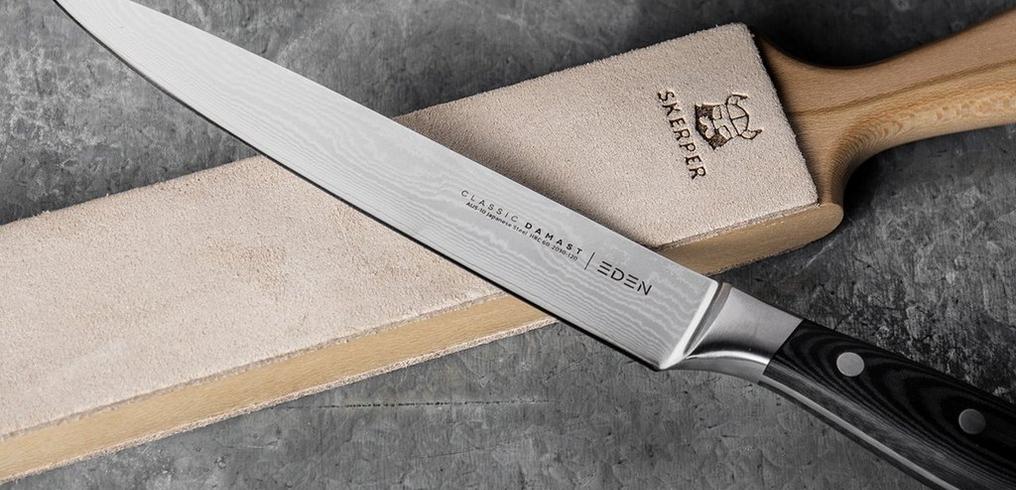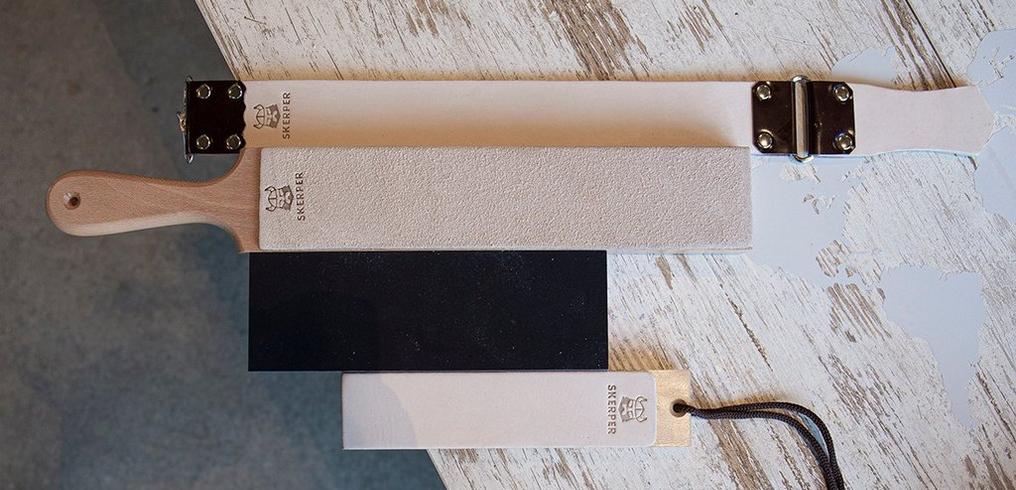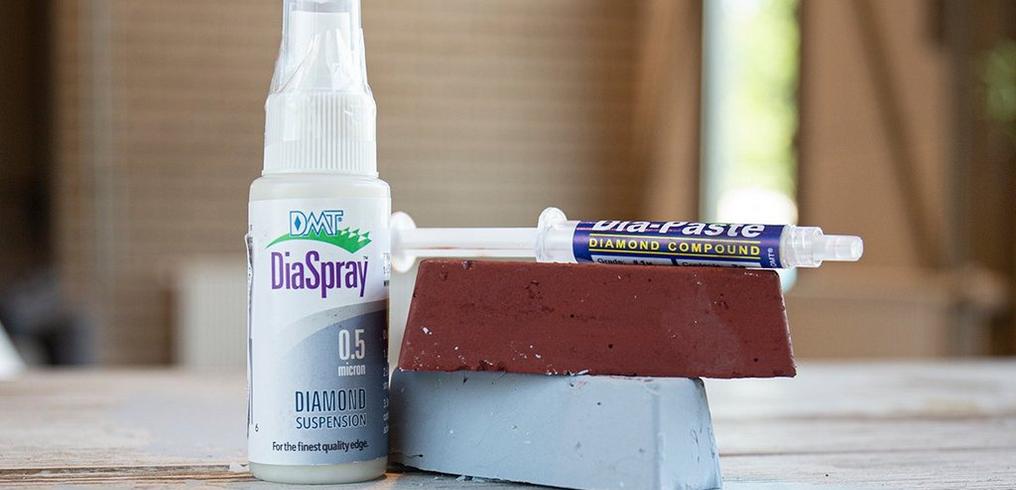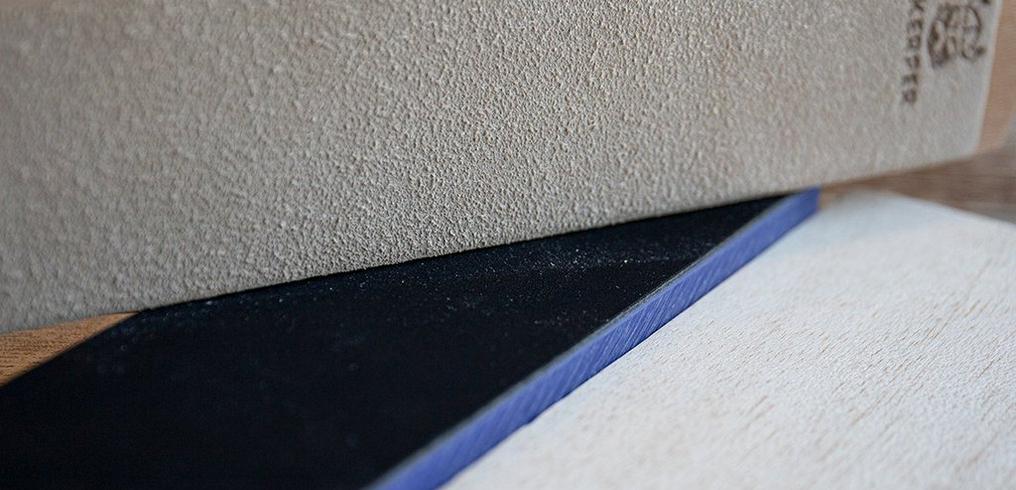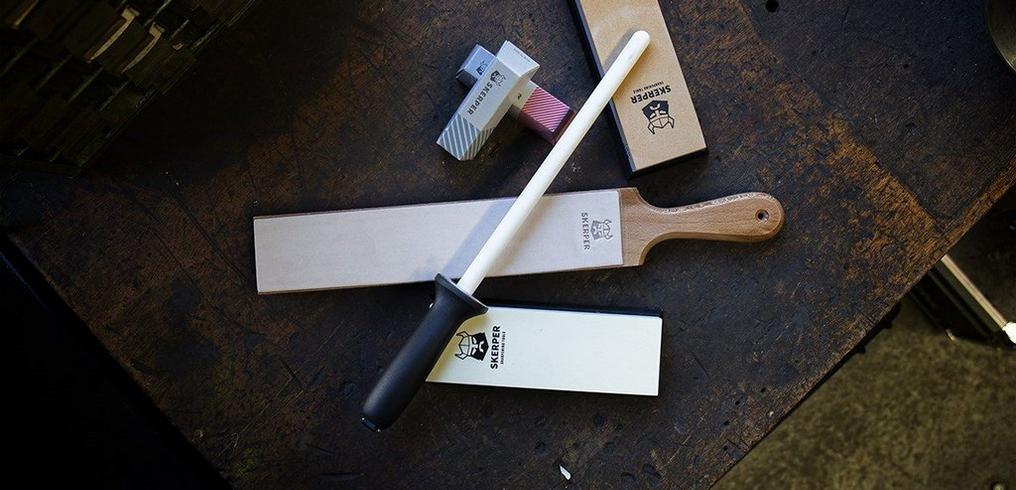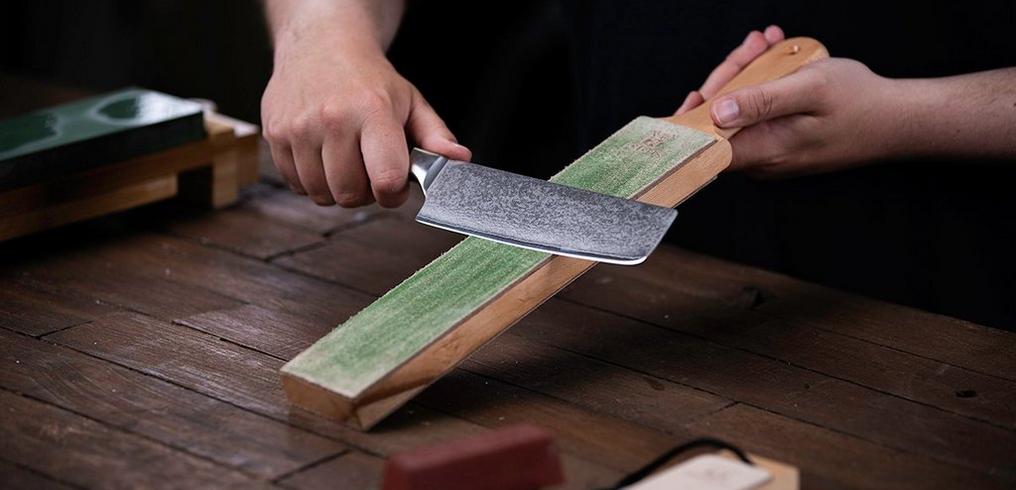Skerper Arkansas Stones: Expert Review by Padraig Croke
There are so many necessary fundamental skills for a woodsman to have in their arsenal. From fire lighting, to camp craft, water purification and knotmanship, just to name a few. It can be overwhelming when you start your outdoors journey to know where your focus should lie, and what skills you should master. With that being said, arguably, one of the most fundamental skills any bushcrafter or outdoor enthusiast can focus on is tool maintenance.
Sharpen your skills
With the right knowledge and practice, a belt knife or an axe is going to allow you to thrive comfortably in the woods, making it possible to construct or craft anything you may need around camp and in some cases can mean the difference been having a fire to cook on and purify your water to going to bed cold and hungry.
This is why it’s important that tools are kept sharp, clean and ready for any job thrown at them. A dull knife or axe is more dangerous than a sharp one, with unnecessary force and pressure used with the tool, slipping and messing up is a lot more likely. Incurring an injury due to lack of tool maintenance is inexcusable to a woodsman. As the old saying goes; “look after your tools and they will look after you”.
Yes, it’s true that things like edge geometry, steel compositions and Rockwell hardness are all part of the rabbit hole of knowledge that is outdoor tools, and to some, this may seem like an overwhelming subject to get into. But honestly, with a few basic pieces of understanding, with knowing how your knife or axe was designed and how it should be sharpened, you will be well on your way to hair popping edges on every cutting edge in your house! There are so many options out there when it comes to sharpening, and everybody will have their preferred way to keep their tools in check. There are everything from traditional Japanese whetstones, industrial diamond coated files, ceramic plates, wet and dry sandpaper and Arkansas Stones to name a few.
Arkansas stones
Arkansas stone, also known as novaculite, comes for the latin word for razor. Since the early 1800's novaculite has been quarried from the bedrock of Hot Springs in the Ouachita Mountains in Arkansas. Formed of quartz, they are mined from the Earth and built by nature and time. There are accounts that go back as far as Roman times, which describe the use of waterstones and whetstones, as well as several locations and sources of such stones.
However, in more modern times, these natural stones have become less popular with the widespread availability of artificial stones, which are often considered superior in sharpening performance due to consistency of particle size and control over the properties of the stones. Also, because novaculite is a quartz based stone, it would be extremely difficult, or in some case, impossible, for a natural Arkansas stone to sharpen some modern steels, which contain materials harder than that of the stone.
With that being said, natural stones still have a huge roll to play in the sharpening game, and have some advantages over their artificial counterparts. For one, because they are so hard and dense, the rate at which they wear away from use is incomparable to an artificial stone. It’s often seen that somebody will inherit their grandfathers or great grandfathers bench stone, with barely a scratch on the surface of the stone, despite generations of use. They are the original and old school method of keeping your tools fighting fit!
Arkansas Stones are perfect for beginners
Particularly for beginners in bushcraft, Arkansas stones are going to be the absolute perfect solution, for a number of reasons. Assuming you are using a blade made from a common steel such as 01 tool steel or 1095 and not “super steel” as talked about above, the Skerper set will give you an impressive range of grits at your disposal.
Arkansas Stones are graded not by grit numbers like other types of sharpening stones, but by their density and hardness. The less dense, or softer the stone, the coarser it is. The more dense, or harder the stone, the finer it is. The coarsest Arkansas Stone is the Soft Arkansas. The Hard Arkansas are in the middle range, and the Hard Black and Hard Translucent and Surgical Arkansas stones are the finest.
Roughly speaking, a full set of Skerper Arkansas Stones (Soft to Translucent) covers an equivalent range of grits from 400-10,000! The small size and weight of them will also mean that they can easily be justified to carry in your pack. They pack a lot of punch for their size.
Using them in the field
Axes
A traditional hand forged axe is one of the most useful and dynamic tools a man can carry in the woods. Companies like Hultafors, Gransfors Bruk or Wetterlings, still forge their axes using traditional methods, and their steel is perfect for sharpening with Arkansas stones. Generally speaking and depending on the task, an axe utilises its weight and power, rather than its slicing ability, to split and process wood. For this reason, axes rarely need an edge as sharp as a knife.
However, for something like a carving axe, a razor edge is preferable. This is entirely possible to achieve by moving your way up through the stone grits by simply holding the axe upside-down and placing the stone on the cutting edge while moving in circular motions along the entire bevel of the blade, as shown here on a carving axe.
Knives
Using the stones on a knife poses some slightly more difficult challenges. Bench stones are usually mounted or held on a bench in a vice while being used. The pocket stones being smaller, they are more portable than bench stones but present difficulty in maintaining a consistent angle and pressure when drawing the stone along larger blades.
Replicating a bench situation can be achieved in the field with a little bushcraft thinking and patience. Here I have simply sawn two cuts into a dead standing log to roughly the length and depth of the stones. You can then chip away and remove the top layer and place each stone into the recess produced. If the stone sits too loose, you can wedge it with another small piece of wood. Moving up the grits, you can very quickly produce a razor sharp cutting edge capable of anything the woods throws at you.
Some final tips
-
Bring a strop! The translucent arkansas stone is capable of producing a mirror finish on your blade, but carrying a strop preloaded with fine compound will be equally as effective in getting that hair popping edge. Skerper also do a compact strop with two types of leather on each side. The rough side for loading with compound, and a smooth side for final finishing.
-
Arkansas stones should always be used with oil. An oil that is not going to clog your stone is ideal
-
Mark the stones in order of grit. The Skerper stones only have a small sticker on the back to indicate which grit they are, which I think will peel off quite easily with use. A sharpie and a grading system on the back of the stones will help with any future confusion.
-
Ditch the pouches. The pouches that each stone comes in are arguably a little too big and bulky for the stones inside. I would probably ditch these in order to save bulk and perhaps carry them in a small tool roll or pouch together.
In summary
I found the Skerper Arkansas pocket stones set to be extremely dynamic and functional. To have such a wide grit range in such a small package for the price is amazing. Of course the stones are bought separately, so you may also choose to pick a small range of them to suit your needs. They can be modulated and carried singularly for simple touch ups in the field, or as an entire set for when you may be out for longer periods. If taken care of, this little set will last you a lifetime!
Padraig Croke
Padraig Croke is the host of the outdoors podcast Trial by Fire, which ran from 2018-2023. A graphic designer and photographer by day, as well as an avid outdoorsman and bushcraft enthusiast, when he's not writing for us he's usually out in the field making film or taking photographs.

You can find his work at www.padraig.me or by following him on instagram @padraigcroke
Thanks, Padraig, for this awesome review!
?%24center=center&%24poi=poi&%24product-image%24=&fmt=auto&poi=%7B%24this.metadata.pointOfInterest.x%7D%2C%7B%24this.metadata.pointOfInterest.y%7D%2C%7B%24this.metadata.pointOfInterest.w%7D%2C%7B%24this.metadata.pointOfInterest.h%7D&scaleFit=%7B%28%24this.metadata.pointOfInterest%29%3F%24poi%3A%24center%7D&sm=c&w=762)
?%24center=center&%24poi=poi&%24product-image%24=&fmt=auto&poi=%7B%24this.metadata.pointOfInterest.x%7D%2C%7B%24this.metadata.pointOfInterest.y%7D%2C%7B%24this.metadata.pointOfInterest.w%7D%2C%7B%24this.metadata.pointOfInterest.h%7D&scaleFit=%7B%28%24this.metadata.pointOfInterest%29%3F%24poi%3A%24center%7D&sm=c&w=762)
?%24center=center&%24poi=poi&%24product-image%24=&fmt=auto&poi=%7B%24this.metadata.pointOfInterest.x%7D%2C%7B%24this.metadata.pointOfInterest.y%7D%2C%7B%24this.metadata.pointOfInterest.w%7D%2C%7B%24this.metadata.pointOfInterest.h%7D&scaleFit=%7B%28%24this.metadata.pointOfInterest%29%3F%24poi%3A%24center%7D&sm=c&w=762)
?%24center=center&%24poi=poi&%24product-image%24=&fmt=auto&poi=%7B%24this.metadata.pointOfInterest.x%7D%2C%7B%24this.metadata.pointOfInterest.y%7D%2C%7B%24this.metadata.pointOfInterest.w%7D%2C%7B%24this.metadata.pointOfInterest.h%7D&scaleFit=%7B%28%24this.metadata.pointOfInterest%29%3F%24poi%3A%24center%7D&sm=c&w=762)
?%24center=center&%24poi=poi&%24product-image%24=&fmt=auto&poi=%7B%24this.metadata.pointOfInterest.x%7D%2C%7B%24this.metadata.pointOfInterest.y%7D%2C%7B%24this.metadata.pointOfInterest.w%7D%2C%7B%24this.metadata.pointOfInterest.h%7D&scaleFit=%7B%28%24this.metadata.pointOfInterest%29%3F%24poi%3A%24center%7D&sm=c&w=373)
?%24center=center&%24poi=poi&%24product-image%24=&fmt=auto&poi=%7B%24this.metadata.pointOfInterest.x%7D%2C%7B%24this.metadata.pointOfInterest.y%7D%2C%7B%24this.metadata.pointOfInterest.w%7D%2C%7B%24this.metadata.pointOfInterest.h%7D&scaleFit=%7B%28%24this.metadata.pointOfInterest%29%3F%24poi%3A%24center%7D&sm=c&w=373)
?%24center=center&%24poi=poi&%24product-image%24=&fmt=auto&poi=%7B%24this.metadata.pointOfInterest.x%7D%2C%7B%24this.metadata.pointOfInterest.y%7D%2C%7B%24this.metadata.pointOfInterest.w%7D%2C%7B%24this.metadata.pointOfInterest.h%7D&scaleFit=%7B%28%24this.metadata.pointOfInterest%29%3F%24poi%3A%24center%7D&sm=c&w=373)
?%24center=center&%24poi=poi&%24product-image%24=&fmt=auto&poi=%7B%24this.metadata.pointOfInterest.x%7D%2C%7B%24this.metadata.pointOfInterest.y%7D%2C%7B%24this.metadata.pointOfInterest.w%7D%2C%7B%24this.metadata.pointOfInterest.h%7D&scaleFit=%7B%28%24this.metadata.pointOfInterest%29%3F%24poi%3A%24center%7D&sm=c&w=373)
?%24center=center&%24poi=poi&%24product-image%24=&fmt=auto&poi=%7B%24this.metadata.pointOfInterest.x%7D%2C%7B%24this.metadata.pointOfInterest.y%7D%2C%7B%24this.metadata.pointOfInterest.w%7D%2C%7B%24this.metadata.pointOfInterest.h%7D&scaleFit=%7B%28%24this.metadata.pointOfInterest%29%3F%24poi%3A%24center%7D&sm=c&w=762)








?%24center=center&%24poi=poi&%24product-image%24=&fmt=auto&h=490&poi=%7B%24this.metadata.pointOfInterest.x%7D%2C%7B%24this.metadata.pointOfInterest.y%7D%2C%7B%24this.metadata.pointOfInterest.w%7D%2C%7B%24this.metadata.pointOfInterest.h%7D&scaleFit=%7B%28%24this.metadata.pointOfInterest%29%3F%24poi%3A%24center%7D&sm=c&w=1016)
